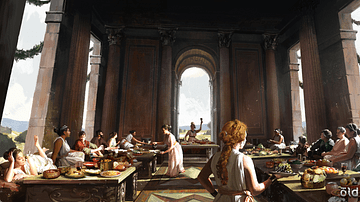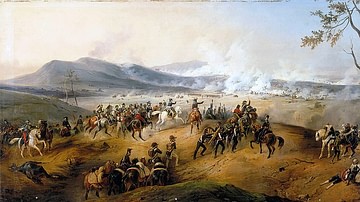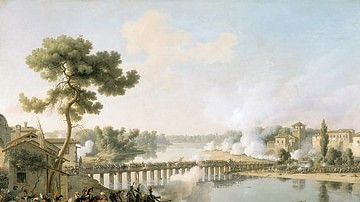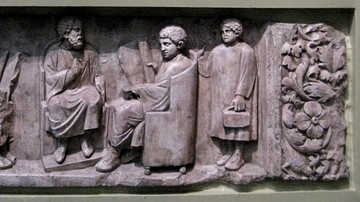Search Articles
Browse Content (p. 35)

Article
Battle of Rivoli
The Battle of Rivoli (14-15 January 1797) was the climactic battle of Napoleon's Italian Campaign of 1796-97. A fourth and final attempt by the Austrian army to relieve the siege of Mantua was thwarted by Napoleon Bonaparte's Army of Italy...

Article
Battle of Arcole
The Battle of Arcole (15-17 November 1796), or Arcola, was a three-day battle fought between Napoleon Bonaparte's French Army of Italy and an Austrian army under József Alvinczi. Part of Napoleon's Italian Campaign, the battle foiled Austria's...

Article
Augustus' Political, Social, & Moral Reforms
Augustus is well known for being the first Emperor of Rome, but even more than that, for being a self-proclaimed “Restorer of the Republic.” He believed in ancestral values such as monogamy, chastity, and piety (virtue). Thus, he introduced...

Article
The Triumphal Feast of Vitellius
The emperor Aulus Vitellius (r. 69 CE) had never wanted to be Rome's emperor. Aulus was from a family of court flatterers to the first Caesars, and when his friend Nero (r. 54-68 CE) was dead, and there were no more Caesars to succeed, he...

Article
Battle of Castiglione
The Battle of Castiglione (5 August 1796) was one of the most important battles of Napoleon's Italian Campaign of 1796-97. After laying siege to the vital fortress of Mantua, General Napoleon Bonaparte and his Army of Italy defeated an Austrian...

Article
Battle of Lodi
The Battle of Lodi (10 May 1796) was a minor, yet important, engagement during Napoleon's Italian Campaign of 1796-97. Although the battle itself held little military significance, victory at Lodi gave General Napoleon Bonaparte the respect...

Article
Social Change in the British Industrial Revolution
The British Industrial Revolution (1760-1840) witnessed a great number of technical innovations, such as steam-powered machines, which resulted in new working practices, which in turn brought many social changes. More women and children worked...

Article
The Impact of the British Industrial Revolution
The consequences of the British Industrial Revolution (1760-1840) were many, varied, and long-lasting. Working life in rural and urban settings was changed forever by the inventions of new machines, the spread of factories, and the decline...

Article
Roman Education
Roman education had its first 'primary schools' in the 3rd century BCE, but they were not compulsory and depended entirely on tuition fees. There were no official schools in Rome, nor were there buildings used specifically for the purpose...

Article
Vikings in Wales
The Norse may have ruled parts of northern Wales in the early 11th century, specifically in Anglesey and Gwynedd, though the degree to which is unclear. Old Norse had relatively little impact on Welsh linguistics, and the Old Norse influenced...